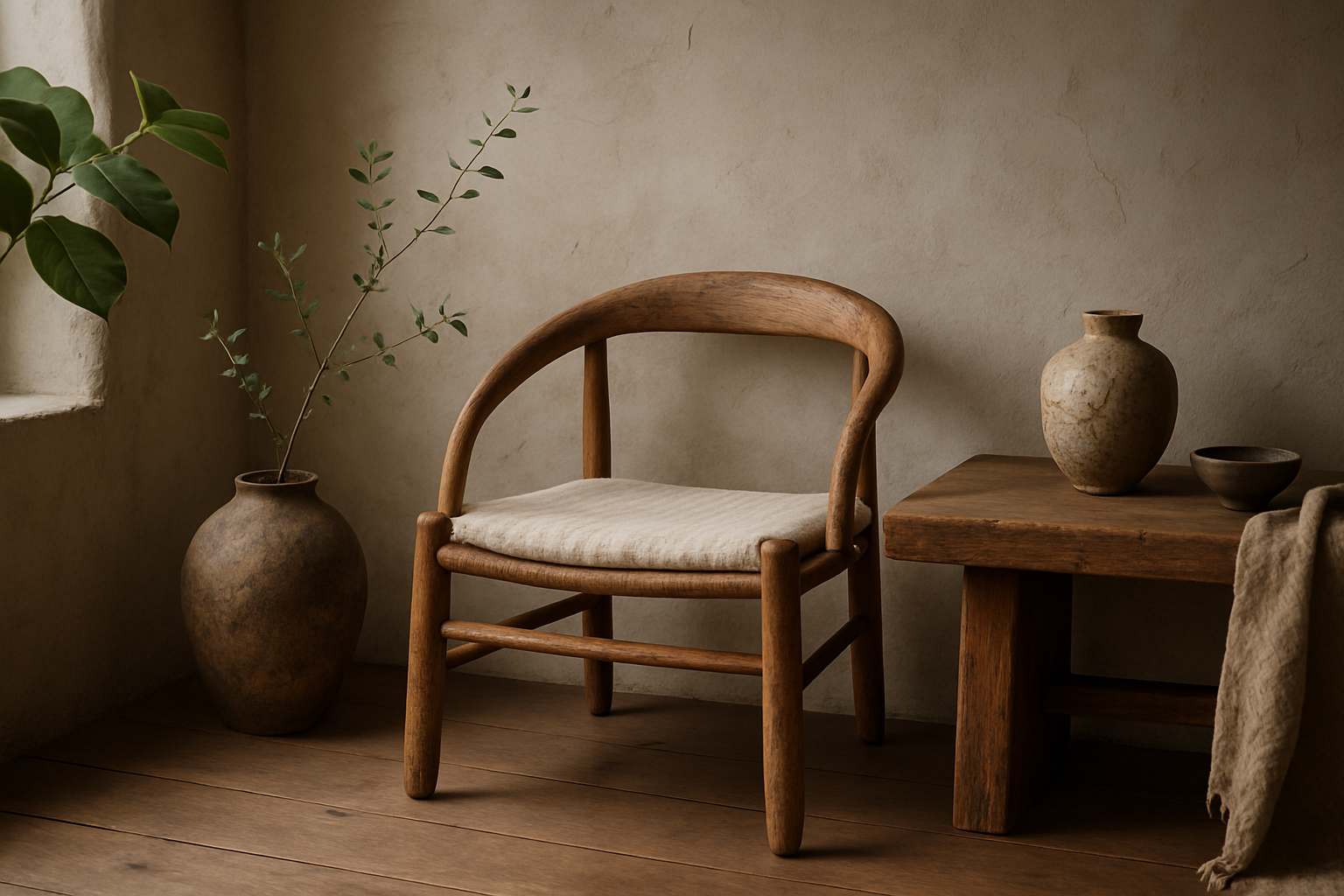Whimsical Wabi-Sabi: Embracing Imperfection in Home Design
In a world obsessed with polished perfection, a quiet revolution is taking place in home interiors. Wabi-sabi, the ancient Japanese philosophy celebrating imperfection and transience, is finding its way into modern homes with a playful twist. This fresh approach, dubbed "Whimsical Wabi-Sabi," combines the serene aesthetics of traditional wabi-sabi with a dash of quirky charm, creating spaces that are both soulful and smile-inducing.

The Roots of Wabi-Sabi
Wabi-sabi has its origins in 15th century Japanese tea ceremonies, where simplicity and rustic elegance were prized over ostentatious displays. The term wabi refers to the beauty found in simplicity, while sabi embodies the passage of time and the patina it leaves behind. Together, they form a worldview that embraces the impermanent and imperfect nature of life.
In traditional Japanese aesthetics, wabi-sabi manifests in weathered wood, asymmetrical ceramics, and the gentle wear of everyday objects. It celebrates the cracks, the fades, and the weathering that come with use and time. This philosophy stands in stark contrast to the Western ideals of perfection and newness, offering a refreshing perspective on what makes a home truly beautiful and lived-in.
The Whimsical Twist
Whimsical Wabi-Sabi takes the core principles of this ancient philosophy and infuses them with a sense of playfulness and joy. It’s about finding the sweet spot between reverence for imperfection and the delight of unexpected elements. This modern interpretation encourages homeowners to mix high and low, old and new, serious and silly – all while maintaining a sense of harmony and intentionality.
In practice, this might mean pairing a sleek, modern sofa with a collection of mismatched vintage throw pillows, each telling its own story. Or it could manifest as a gallery wall featuring both fine art prints and children’s drawings, celebrating the beauty in both professional mastery and innocent creativity.
Incorporating Whimsy into Wabi-Sabi Spaces
The key to successful Whimsical Wabi-Sabi lies in balancing the serene with the surprising. Start with a neutral base that echoes traditional wabi-sabi elements – think natural materials, earthy tones, and simple forms. Then, layer in unexpected pops of color, texture, and personality.
Consider a dining room with a rough-hewn wooden table as its centerpiece. Instead of matching chairs, opt for an eclectic mix of seating options – perhaps a vintage bench on one side, mismatched wooden chairs on the other, and a vibrant, modern armchair at the head of the table. Complete the look with hand-thrown ceramic plates in various sizes and shapes, embracing their irregularities.
In the bedroom, a linen duvet in a soft, undyed hue provides the perfect backdrop for an assortment of colorful, handmade quilts and embroidered pillows. A weathered wooden nightstand might hold a stack of well-loved books alongside a whimsical, animal-shaped lamp, creating a delightful contrast between the serious and the playful.
The Art of Curated Imperfection
One of the challenges – and joys – of Whimsical Wabi-Sabi is in the curation. This style encourages homeowners to be thoughtful collectors, seeking out pieces that speak to them on an emotional level rather than adhering to a strict design rulebook. It’s about creating a space that feels authentically you, quirks and all.
This might mean displaying a cherished collection of mismatched teacups, each with its own story and imperfections. Or it could involve creating a feature wall with an assortment of vintage mirrors in different shapes and sizes, their tarnished edges adding character and depth to the space.
The key is to approach your home with a sense of curiosity and openness. Allow yourself to be drawn to objects and arrangements that might not traditionally go together, but somehow feel right when combined. This process of discovery and arrangement becomes an ongoing creative practice, allowing your home to evolve and grow with you over time.
Embracing the Ephemeral
A core tenet of wabi-sabi is the acceptance of impermanence, and this carries through to its whimsical counterpart. Whimsical Wabi-Sabi encourages us to celebrate the changing seasons and the passage of time within our homes. This might manifest in seasonal displays that highlight nature’s cycles – a vase of spring blossoms giving way to autumn leaves, then bare winter branches.
It also means embracing the wear and tear that comes with daily life. Rather than hiding signs of use, Whimsical Wabi-Sabi invites us to see the beauty in a well-worn leather sofa, or the stories behind scratches on a wooden dining table. These imperfections become part of the home’s narrative, adding depth and character to the space.
DIY and Upcycling in Whimsical Wabi-Sabi
This design philosophy lends itself beautifully to DIY projects and upcycling, encouraging homeowners to get creative with what they have. Old furniture can be given new life with a coat of chalk paint, intentionally distressed to add character. Mismatched china can be transformed into a unique wall installation, celebrating the beauty in their collective imperfection.
Consider creating a Whimsical Wabi-Sabi inspired craft corner in your home. Stock it with natural materials like clay, wood, and fabric scraps, along with tools for creating. This space becomes not just a functional area for making, but a visual representation of the philosophy itself – a celebration of process, imperfection, and creativity.
The Psychological Benefits of Whimsical Wabi-Sabi
Beyond its aesthetic appeal, Whimsical Wabi-Sabi offers significant psychological benefits. In a world that often demands perfection, this approach to home design provides a refreshing antidote. It encourages us to find beauty in the everyday, to value authenticity over flawlessness, and to approach our living spaces with a sense of play and wonder.
This mindset can lead to reduced stress and increased contentment. When we’re not striving for an unattainable ideal of perfection in our homes, we’re free to truly relax and enjoy our spaces. The whimsical element adds an extra layer of joy, reminding us not to take ourselves – or our decor – too seriously.
Whimsical Wabi-Sabi in the Digital Age
Interestingly, the rise of Whimsical Wabi-Sabi coincides with our increasingly digital lives. As we spend more time in virtual spaces, there’s a growing desire for homes that feel tangibly real, with all the quirks and imperfections that entails. This design philosophy offers a way to create spaces that are uniquely personal and grounded in the physical world.
Moreover, the ethos of Whimsical Wabi-Sabi aligns well with the growing interest in mindfulness and slow living. It encourages us to be present in our spaces, to notice and appreciate the small details that make a house a home. In this way, it offers a bridge between ancient wisdom and modern living, helping us create homes that are not just beautiful, but deeply nourishing to the soul.





